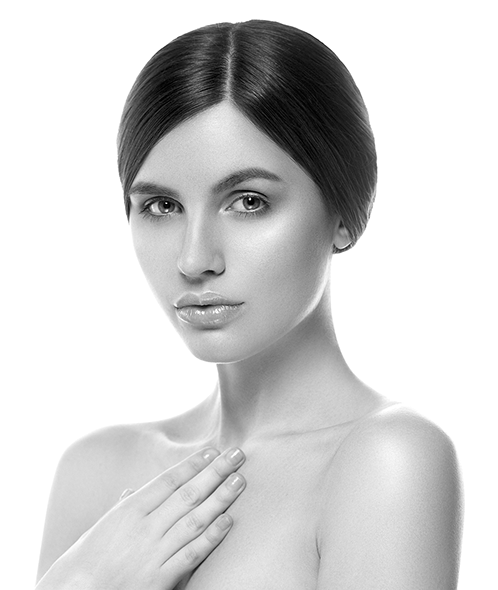In this section we show you the effective simplicity of the Patakara method. It consists of a basic exercise lasting 3 minutes and a set of 12 postures, called a full training, which is done in just 1 minute. Although both can be done separately, the best results are achieved by combining them and repeating them several times a day according to a very comfortable schedule. Furthermore, since it's so easy to carry with you, you can practice with your Patakara anytime, anywhere.
Basic exercise
How to use your Patakara
Full training
In May 2019, as environmental protection measure, the manufacturer stopped including the instructional DVD (audio only in English, Chinese and Japanese) in the boxes of Patakara products. Therefore, you will be able to get all the information about Patakara (instructions, tips and recommendations) only through us.
When you purchase your Patakara in our store, you will receive, along with the corresponding invoice, the necessary tools and links to access all the information we offer in 5 languages (English, German, Portuguese, Russian and Spanish): a complete and detailed user guide (accompanied by videos and photos) and the best tips and recommendations so that you achieve the desired results with your Patakara.
As an official distributor, on Patakara.eu you will always find the best service and support, and the originality, quality and safety of Patakara products.

Precautions
Despite the high safety of the method, there are a number of precautions to take into account when using Patakara:
- Minor injuries and infected sores either in the oral cavity or on the face;
- Skin conditions (eczema, fungous diseases);
- inflammatory diseases of the facial and trifacial nerves;
- neuropathy;
- ENT ilnesses — rhinitis, maxillar sinusitis, tonsillitis (with lymph flow, bacteria can also spread in the body);
- lymphatic system diseases;
- brain blood flow disorder;
- high blood pressure;
- oncological diseases;
- severe osteoporosis;
- brain injuries;
- general serious diseases (pancreatic diabetes, severe vascular pathology, endocrine and immune system diseases, systemic connective tissue diseases, collagenoses).
- mental disorders and certain neurological diseases;
- alcoholism;
- drug abuse;
- generally feeling sick;
- your general physician’s prohibition;
- notched cosmetic mesothreads (cogs and aptos) in place.
The main contraindication for using Patakara is any illness in acute phase. In that case, consult your doctor.
In case of any systemic disease that causes swelling and edema (such as cardiopulmonary or kidney diseases, thyroid disorders, etc.), the results of exercising will not last long, as the skin will stretch out again and again due to the constant flow of fluids.
If you have any questions, please contact us.

What material are Patakara and Fit-Pull made of?
Why do we need
Fit-Pull elastic band?
Does Patakara help treat TMJ dysfunction and the asymmetries caused by this disorder?
Can the exercises be extended for more than 5 seconds? Is it more effective?
It's hard for me to close my lips around Patakara
Patakara presses my gum, am I doing something wrong?
I can't hold the device, it falls out of my mouth during exercises
Is excessive salivation normal when using my Patakara?
Why does the face immediately lose volume?
How long does it take to get
the full effect?
Which facial area improves most quickly with Patakara?
Is it normal for Patakara
to turn yellow?
Can Patakara be used during an orthodontic treatment?
In addition to Patakara and some massages, what is recommended to treat bruxism?
Does the absence of molars influence the formation of nasolabial folds?
Can I use Patakara if I have recently undergone biorevitalization treatment?
Can I use Patakara if I have Botox?
Can both Patakara and the Fit-Pull elastic band be affected by exposure to sub-zero temperatures in winter environments?
FAQ
In this section you will find answers to the most common questions related to the use of Patakara. We hope it helps you better understand how Patakara works and how to make it part of your life.
Both Patakara and the Fit-Pull elastic band are made of a high-quality, hypoallergenic and biocompatible polyester elastomer for medical and cosmetic use. They can even be used with certain skin diseases such as atopic dermatitis.
To increase the effectiveness of training with your Patakara. As described in our instructions, the support hand must put some pressure on the face or neck (depending on the posture). Fit-Pull prevents the support hand from sliding on the skin and allows the muscles to be specifically fixed.
Yes a lot. In most cases, if the origin is not in bone structure problems, facial asymmetries are due to a disorder of muscle tone. And muscle tone can be perfectly recovered with Patakara.
Our body has many self-regulation and self-regeneration mechanisms, we just have to help it recover. With the Patakara facial trainer, we achieve complex work on the muscular, circulatory, lymphatic and nervous systems. This offers hope for health, improved quality of life and preservation of the youth of the face to those who have problems with the facial muscles and nerves, and TMJ dysfunctions.
As we indicate in our instructions, 5 seconds is enough to give the correct impulse to the muscles and brain and not to overstimulate the neuromuscular connection. But in cases of facial paralysis, dementia, Down syndrome and autism, Patakara can be used more than 5 times a day because in these cases the neuromuscular connection has almost or completely disappeared and the stimulation needs to be intensified. That being the case, you can practice more but under our supervision and with our professional advice.
Your orbicularis oris muscle is too weak. It is recommended, then, to do the basic exercise for more than 3 minutes (up to 1 hour is possible, the time your brain can withstand such stimulation) until your orbicularis oris muscle strengthens.
Do not compress your lips too tightly around your Patakara: it is not about squeezing but, rather, keeping your Patakara closed with the force of your lips. You can also lightly pull the Patakara loop to reduce pressure on the gums. If it occurs, it is usually when you start practicing, so, over time, that problem will disappear. On the other hand, remember that if you have a sore or similar in your mouth, postpone training until the wound heals.
Your orbicularis oris muscle is still too weak. Gently pull on the trainer as hard as you can hold your Patakara in your mouth. Remember not to force your lips or other facial muscles. With practice, your orbicularis oris muscle will become stronger and you will be able to hold your Patakara without problems.
It is normal during the first months. First of all, the mere fact of having something in your mouth triggers salivary secretion. Secondly, during training with Patakara, a powerful cleansing of the tissues occurs because the lymphatic system is activated. Over time, although not completely, copious salivation will decrease.
In the initial stage of using Patakara, edema caused by fluid retention (of which we are often unaware) are the first to disappear. Also, during this first phase, the muscles and tissue nutrition have not yet been fully restored. So the face may look thin at first if the swelling was excessive. We call this period “the time of the ugly duckling.” But, don't worry, keep working. The tissues need about 2-3 months to improve and the results will not be long in coming! Be sure to observe your changes by taking before and after photos.
It depends on your starting point, age and lifestyle. If you practice according to the instructions (4-5 times daily), lead a healthy lifestyle and do some type of physical activity such as biodynamics, pilates or dynamic yoga, you will need at least 6 months to get great results. In elderly cases, it may take 1 year.
Based on personal experience and that of our clients, results can continue to progress for up to 2-4 years. From there, progress slows down and it becomes necessary to supplement the work with additional techniques if there are problems in certain areas.
The one whose muscle tone has changed less and suffers less fibrosis.
Each face is unique and each body has its own imbalances. Posture also greatly influences the state of the neck and, by extension, the face. The most difficult part of the face to recover, if it is very deformed, is the lower part. This area is also frequently the cause of, among other things, the formation of nasolabial folds and tension in the mouth and chin.
Yes, normal. It depends on the pH of your saliva, the bacterial flora in your mouth and your diet. Additionally, smoking, drinking a lot of coffee or tea, or not removing lip makeup before using it can cause stains to appear even faster. But remember that even if your Patakara changes color, it will still be just as effective.
Yes. Not only it can be used, but Patakara can be a perfect complement to orthodontic treatment: the movement of the teeth will be faster and less painful, and the muscles will not be tense due to the reorganization of the bite.
You just have to pull your Patakara a little more forward so that it does not come into too much contact with the brackets, for example. And make sure, too, that the surface of the trainer doesn't get damaged or scratched.
- Elimination of stress.
- Control of facial expressions.
- Mouth and bite care.
- Exercises for the neck.
- Postural hygiene.
Of course, it is one of its possible causes! Instead of injecting filler in that area, it is better to recover missing teeth (with implants, for example) and practice Patakara.
You can, but it is better to wait until the papules that appear after the injections disappear. We recommend you read our post (in Spanish) on Instagram about biorevitalization and its negative effects on skin health.
You can, but the effect of Botox will dissipate faster due to the activation of the facial muscles and the improvement of the lymphatic and circulatory systems that you will achieve with Patakara.
The material from which both Patakara and the Fit-Pull elastic band are made is resistant to cold and, therefore, neither of them requires special protection in winter environments.
Legal Notice / Privacy Policy / Cookie Policy
© 2024 Patakara.eu - Official Patakara Distributor. All Rights Reserved.
ADDITIONAL INFORMATION
SHOPPING



